Inside Fashion’s Booming Unofficial Schmoozefest

- Oops!Something went wrong.Please try again later.
Courtesy of Bottega Veneta
This is an edition of the newsletter Show Notes, in which Samuel Hine reports from the front row of the global fashion week circuit. Sign up here to get it in your inbox.
At Milan Fashion Week in February, I could barely go two steps in my Bally moccasins without being asked if I was coming back for Salone del Mobile in April. Salone, as it’s known, is the sprawling fair that anchors Milan Design Week, a festival of furniture and architecture that brings hundreds of thousands of visitors to the city every year. Salone is also the only week when flights and hotels are more expensive than during the runway shows, when taxis are somehow even more scarce, when the waiters at Torre di Pisa look at you with even more disdain when you walk in senza reservation. If you think it’s crazy now, everyone said, just wait for Salone. No thank you!
And then I relented and started planning a trip, for the same reason Salone was on everyone’s lips during the runway show circuit. This year, I realized, Milan’s design-palooza was effectively a supercharged extension of fashion week, the latest sign of an accelerating convergence between the worlds of luxury clothing, design, art, and architecture.
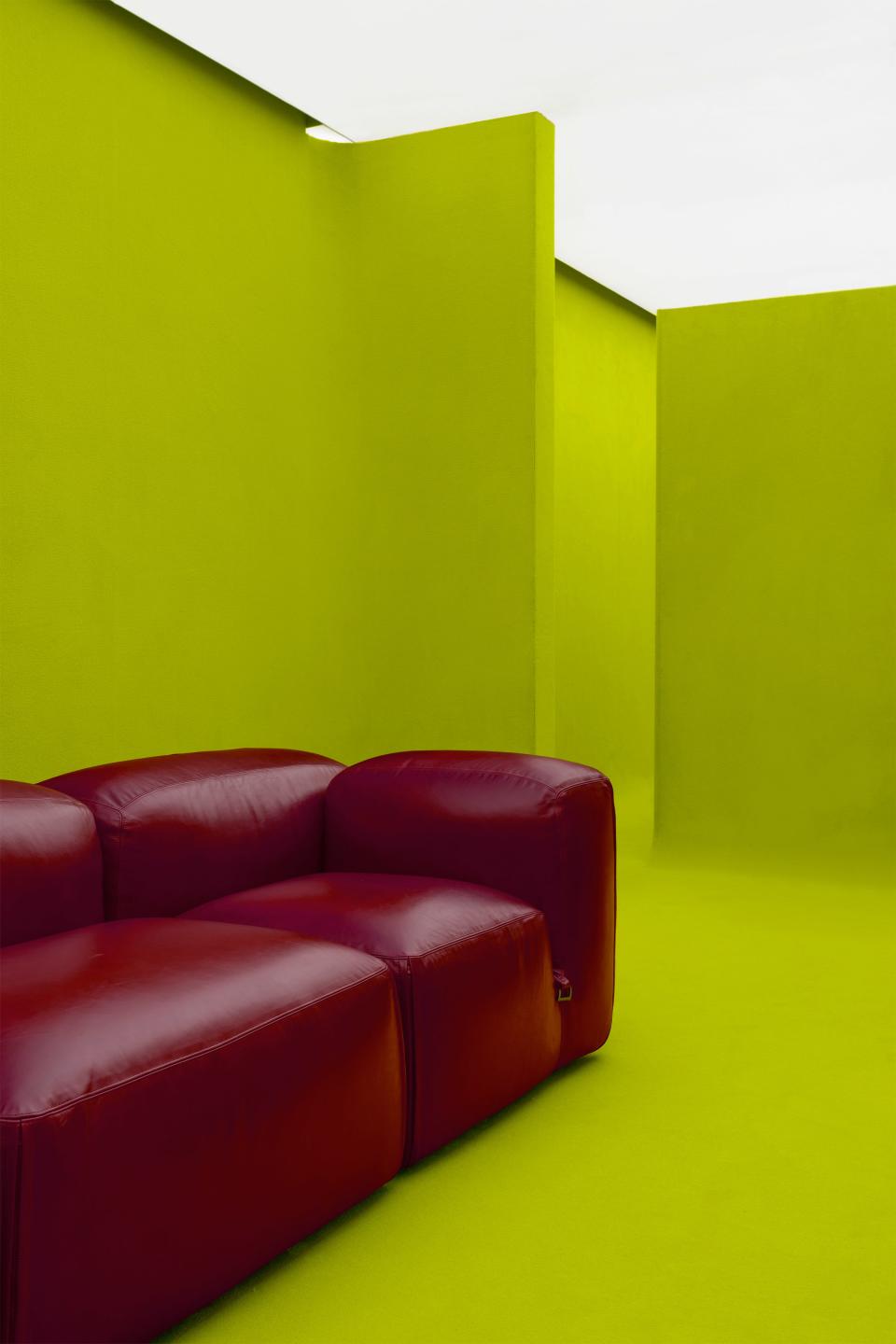
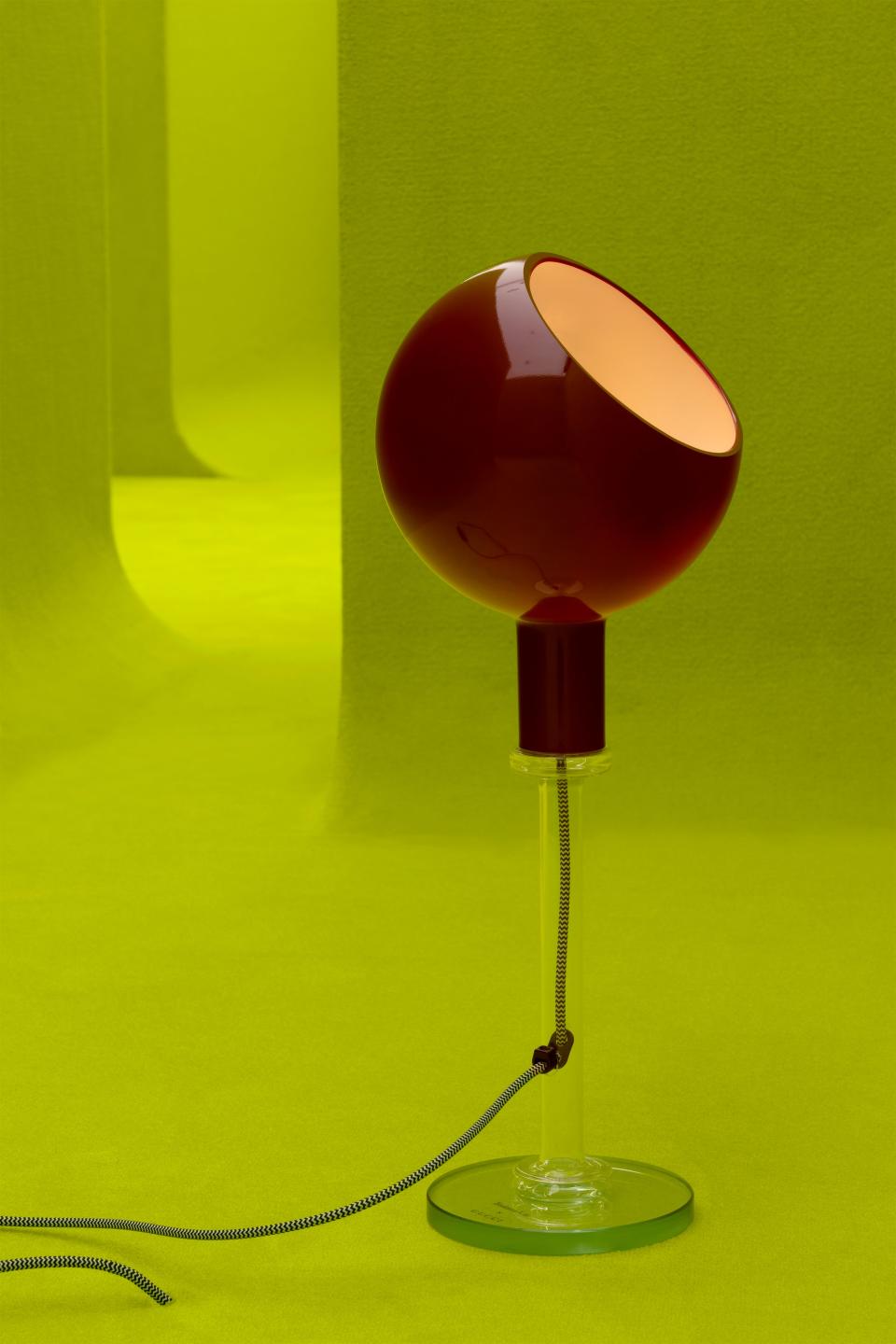
“It’s all becoming one big world,” Thom Browne told me. The designer, who typically shows his collections between New York and Paris, parachuted into Salone to launch a line of bedding with heritage Italian linen brand Frette. In one of the week’s headlining moments, Browne took over the historic Palazzina Appiani for a presentation-slash-performance art piece (which I reviewed here) featuring models dressed in the brand’s signature gray garb sleeping on a series of luxuriously appointed cots. Compared to Browne’s elaborately theatrical runway shows, it was, the designer acknowledged, a bit more “monotonous.” But it was a compelling twist on what the Salone crowd is used to: looking at furniture in a showroom. “There is a lot of crossover,” Browne said, “but it’s nice to do something for a different audience.”
Thom Browne was just one of many luxury brands that brought outsize buzz to Salone. At a cocktail party held by Loewe to celebrate an exhibition of 24 lamps the brand commissioned for the fair, Jonathan Anderson marveled at the turnout for the first day of the show, held in the modern bunker-like basement beneath the 18th-century Palazzo Citterio. “It was madness,” he said. “We had one-thousand people registered to see the show today, and a 250 person queue down the street all day long!” Most of the eclectic price-upon-request light fixtures appeared to be sold.
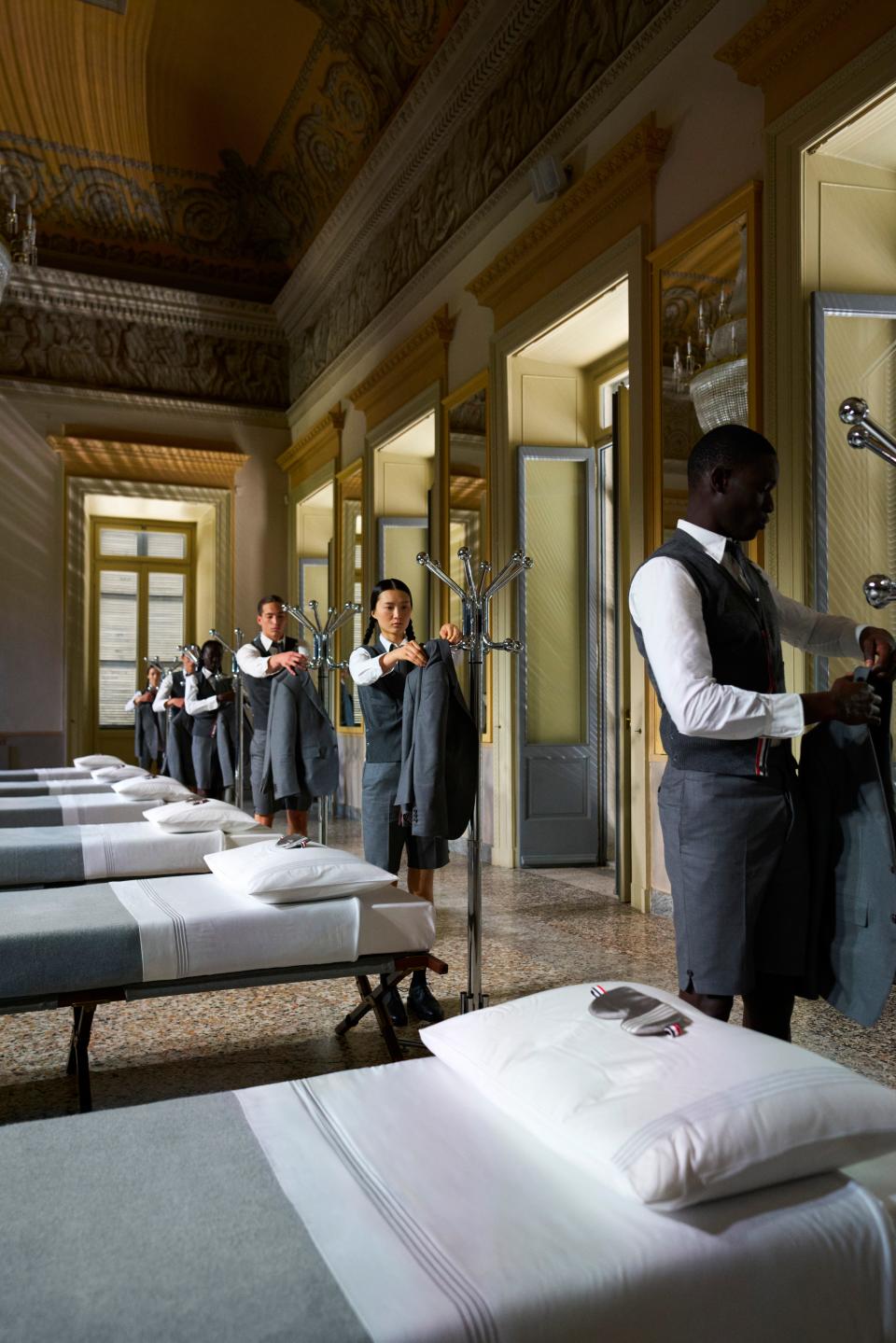
Generated image
I was in Milan for 48 hours, but I would have needed an entire week to hit all of the fashion events that took over the city. Besides Thom Browne and Loewe, Loro Piana, Gucci, Versace, Bottega Veneta, Prada, Hermès, Fendi, Saint Laurent, Zegna, Balenciaga, Rimowa, Moncler, Stone Island, JW Anderson, and Off-White all held exhibitions and installations and activations.
Only a few fashion houses were there to actually sell furniture of their own design and manufacture. As a furniture world executive told me at one of the thousand cocktail parties happening on Monday night, it is extraordinarily hard to break into the business due to the high costs of developing production and distribution. (Hermès, which took over a warehouse for an extremely popular immersive presentation of its artisanal leather-wrapped chairs and cashmere blankets, is a rare exception.)
What fashion brands have gotten the hang of is how to use Salone as a marketing tool to a wide swath of consumers. I’ve never seen a line outside a Gucci store anywhere like the one snaking around the brand’s via Montenapoleone flagship on Monday. The crowd was there not for a new collection drop but to see an an exhibition of five iconic pieces of Italian design—including the deeply-’80s Perola lamp designed by Gae Aulenti and Piero Castiglioni, and the modernist Storet drawers by Nanda Vigo—done in the brand’s new signature beet-red Rosso Ancora hue. And in a concrete shell off Palazzo San Fedele that will eventually be the new Bottega Veneta offices, the brand installed two piles of Le Corbusier stools—the same ones guests sat on at Matthieu Blazy’s February runway show.
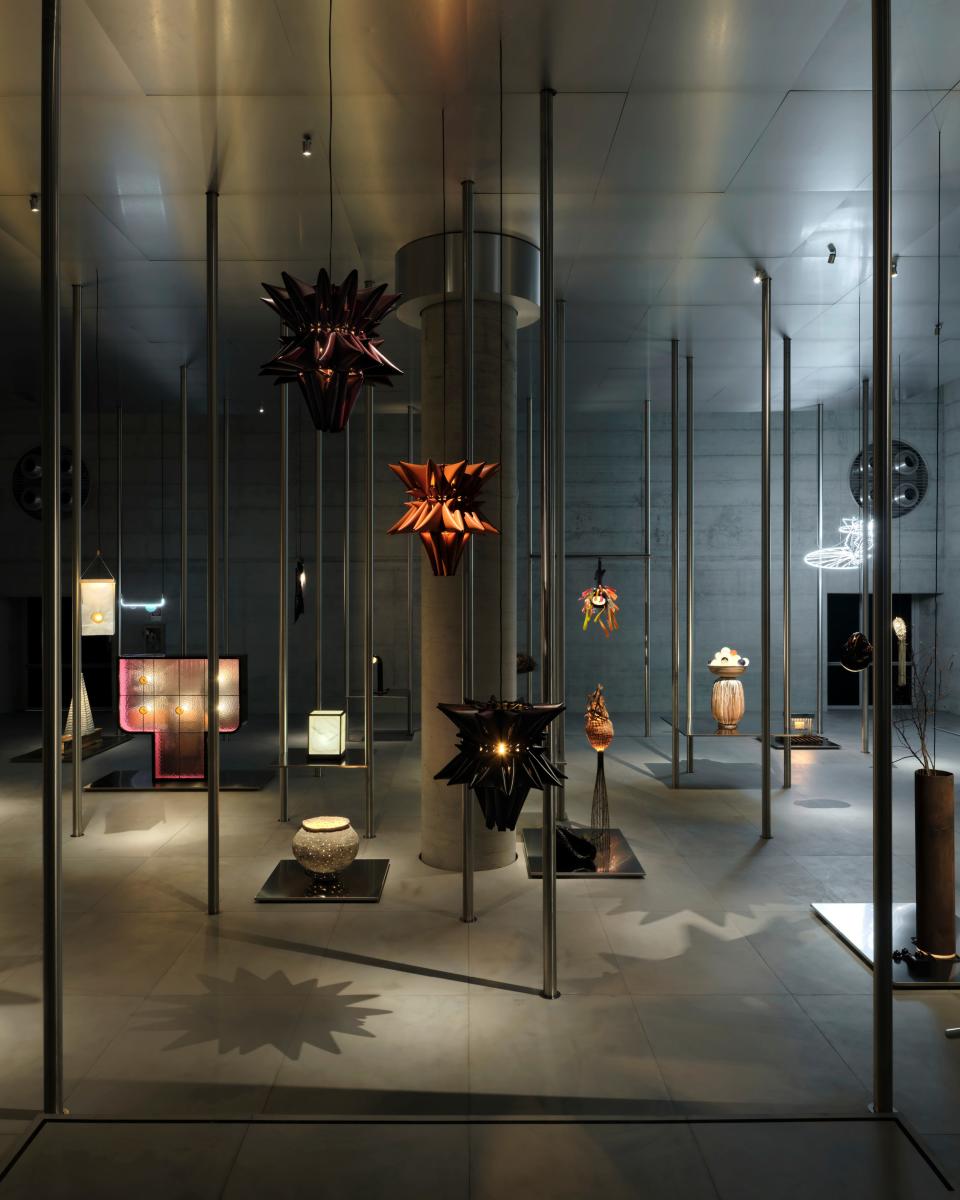
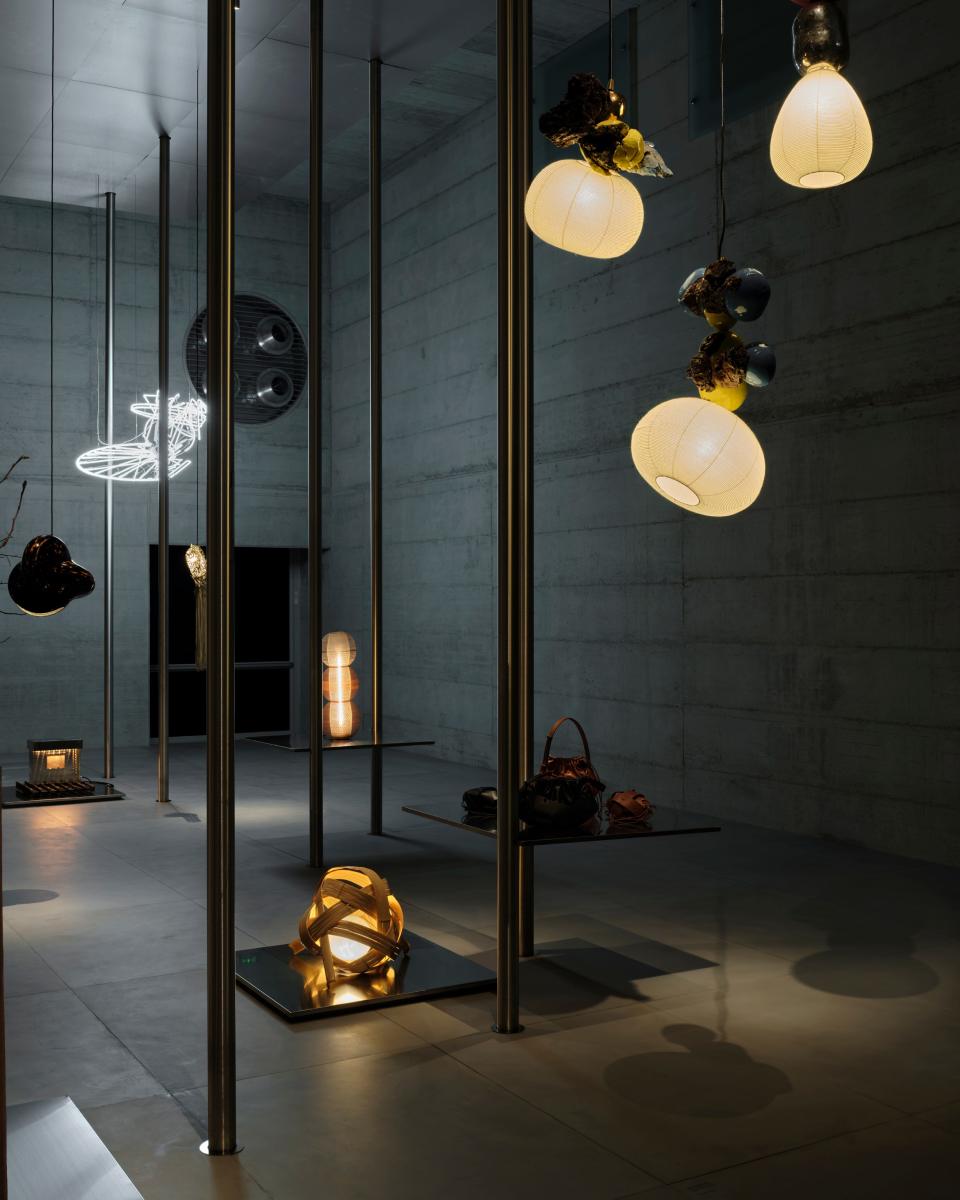
I’ll admit that Salone lacks the whiz-bang of fashion week. Bottega Veneta’s Fall-Winter 2024 show was full of Blazy’s compelling and challenging ideas about beauty, craft, shape, and the way we dress today. A$AP Rocky was there. Gazing at the object I sat on for that experience was more one-note. Cool stool!
But I quickly realized that Salone’s relatively low frequency was precisely why the fashion crowd loves it so much. Salone is not a celebrity magnet, and the press preview days are packed but low-stress. You can make your own schedule, and there are buckets of free champagne and negronis at every stop. There are no street style photographers, so everyone dresses with a sense of ease. Even publicists, usually frantic, were relaxed. “Oh my god, this week is so much better,” said an Italian fashion PR as he crushed a spritz outside new aperitivo hotspot Bene Bene. The publicist’s firm was handling over two dozen events in two days, but none would require wrangling movie stars or influencers. Unlike clouty fashion week fêtes, Salone cocktail parties are tier-one insider schmooze fests; the biggest of the week was T Magazine’s twentieth anniversary blowout at the iconic Villa Necchi, which broke up soon after a man stripped down to his underwear and jumped in the pool.
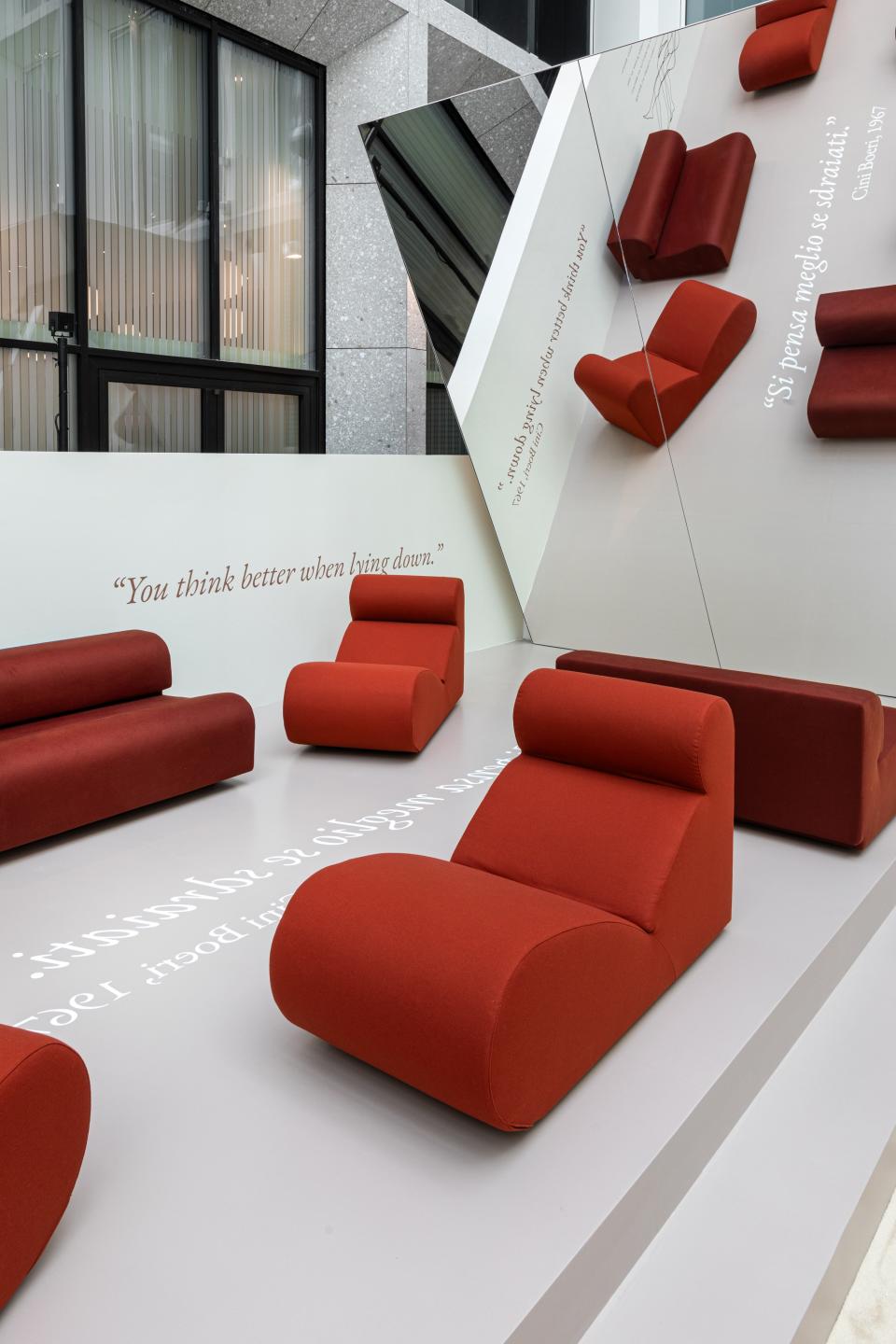
And Salone still offers the general public a unique opportunity to engage with luxury fashion in a way exclusive fashion week events do not. This week, anyone who pre-registered could go to Loro Piana’s Brera headquarters to see an exhibition of couches and chairs by pioneering Italian architect Cini Boeri. Or to the Palazzo Versace on via Gesù to see the brand’s opulent “conversation sofas” in the mansion where Gianni used to keep an apartment, accompanied by an audio tour marking significant moments in Versace history. It’s no wonder the furniture crowd is starting to grumble about the fashion world’s Salone encroachment, as I heard a number of times on the aperitivo circuit. The fashion brands are simply putting up huge numbers. Last year, when Bottega Veneta unveiled a Gaetano Pesce installation at its Milan flagship, 11,000 people registered to pass through, and a Bottega rep expected as big a draw this week. (100 editions of the wood stools were for sale for €2,500; 60 special leather-wrapped versions cost €12,000.)
Whether fashion’s relationship with Milan Design Week will last for the long haul is an open question. Show Notes readers may recall that back in 2022 I called Art Basel Miami Beach the “fifth fashion week.” Last year, the energy fizzled as the art market cooled. One thing is for sure: fashion editors will certainly keep coming back as long as Salone continues to resemble one big cocktail party. And if this year was any indication, the fashion world’s massive cultural gravity is only getting stronger. It is clear that the biggest luxury brands can still draw outside industries and events into their orbit.
Not all brands treated Salone as a marketing exercise. Starting Sunday, Prada held its third annual Frames symposium, inviting guest speakers to the Bagatti Valsecchi Museum to lead discussions on the idea of the home. “The home is no longer merely a source of comfort; it acts as a shelter and an infrastructure of services. This constantly evolving, dynamic space is where the socio-economic norms that underpin communities have historically taken shape,” read a press release. On Tuesday, the architect Marina Otera Verzier led an engaging Prada Frames session on the conceptual possibilities of the bathroom. It was extremely interesting—or so I was told. Every single lecture across the two days I was in town had long since been booked.
See all of our newsletters, including Show Notes, here.
Originally Appeared on GQ

